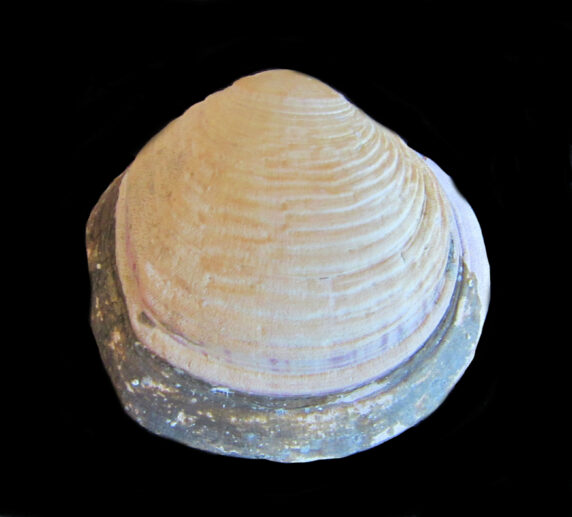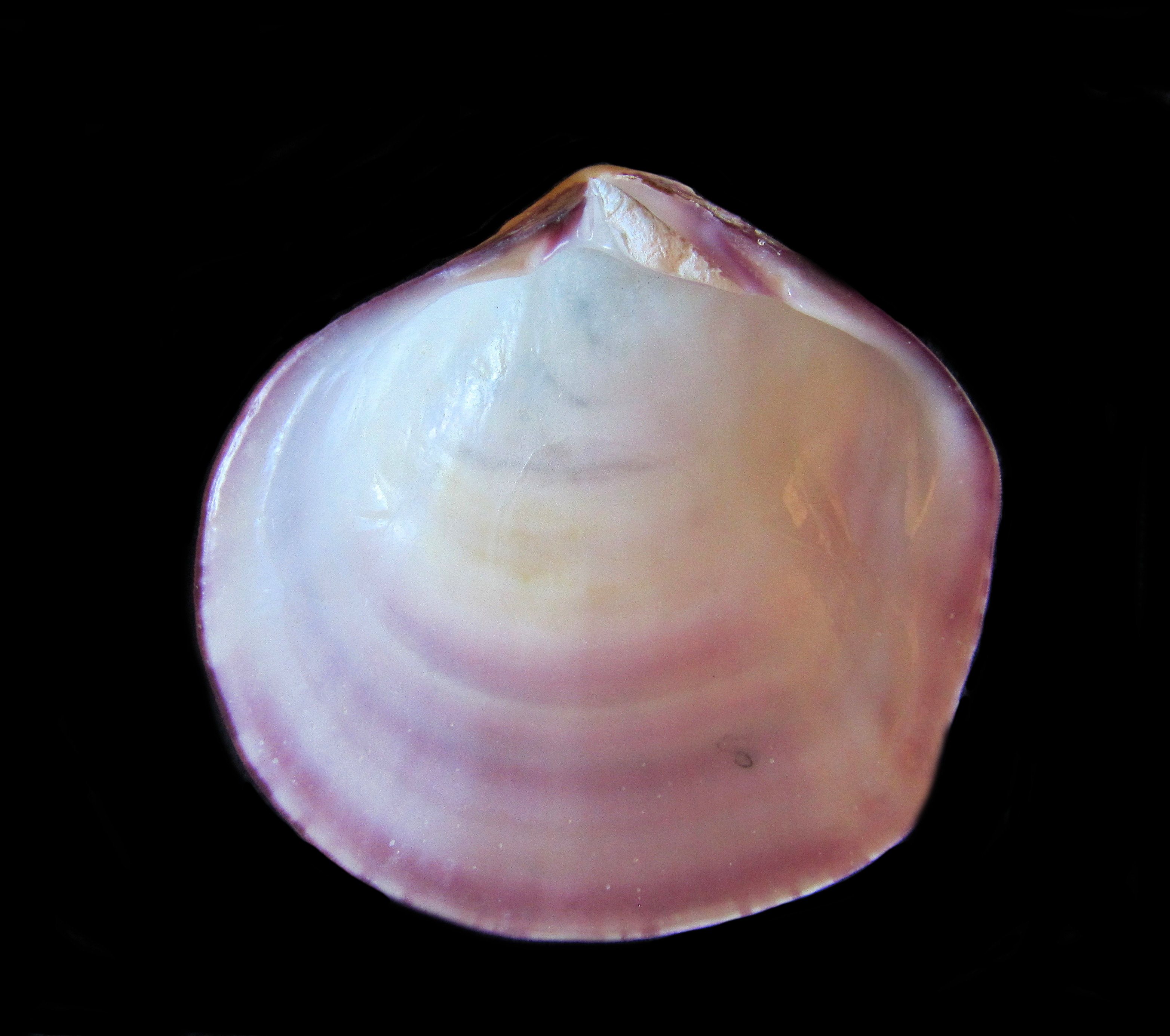Clipped Semele Shell, Semele decisa

 Clipped Semele Shell, Semele decisa. Shell collected from within the estuary of the Magdalena Bay complex, Baja California Sur, October 2018. Size: 10.9 cm (4.3 inches) x 9.5 cm (3.8 inches). Collection, photograph and identification courtesy of Bob Hillis, Ivins, Utah.
Clipped Semele Shell, Semele decisa. Shell collected from within the estuary of the Magdalena Bay complex, Baja California Sur, October 2018. Size: 10.9 cm (4.3 inches) x 9.5 cm (3.8 inches). Collection, photograph and identification courtesy of Bob Hillis, Ivins, Utah.
The Clipped Semele, Semele decisa (Conrad, 1837), is a bivalve mollusk that is a member of the Semelidae Family of Furrows. They are also known as the Bark Semele and in Mexico as almeja blanca Mexicana. The shell is a thick and flat that has a circular profile, except that they have a straight posterior end that appears to have been clipped off, hence their common name. The exterior has strong concentric ridge sculptures. The shells are covered with a light brown periostracum which often remains in the furrows between these ridges in worn shells. They have a white to tan exterior and a white with a purple tinge interior with a small portion of their population having concentric banding leading from the margin. The Clipped Semele Shell reach a maximum of 12.0 cm (4.7 inches) in length and 10.5 cm (4.1 inches) in height.
Clipped Semeles reside buried in coarse sand, gravel or rubble, in the intertidal zone to depths up to 46 m (150 feet). They are associated with rocky areas near exposed coastline. They range from Southern California to Magdalena Bay, Baja California Sur; in the Sea of Cortez they are found from San Felipe, Baja California to Cabo San Lucas, Baja California Sur.
Synonyms include Amphibdesma decisa, Amphibdesma rubrolineatum, and Semele rubrotincta.